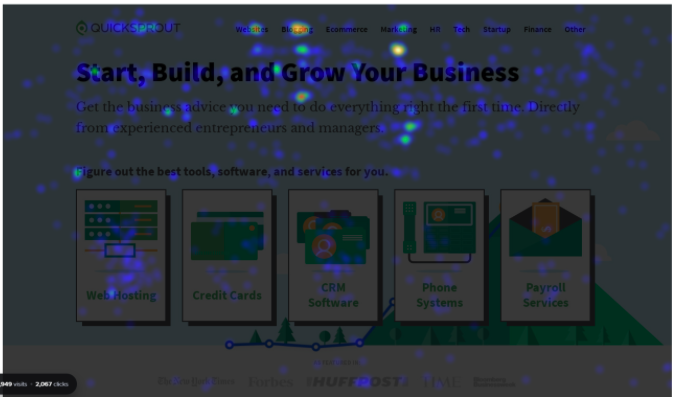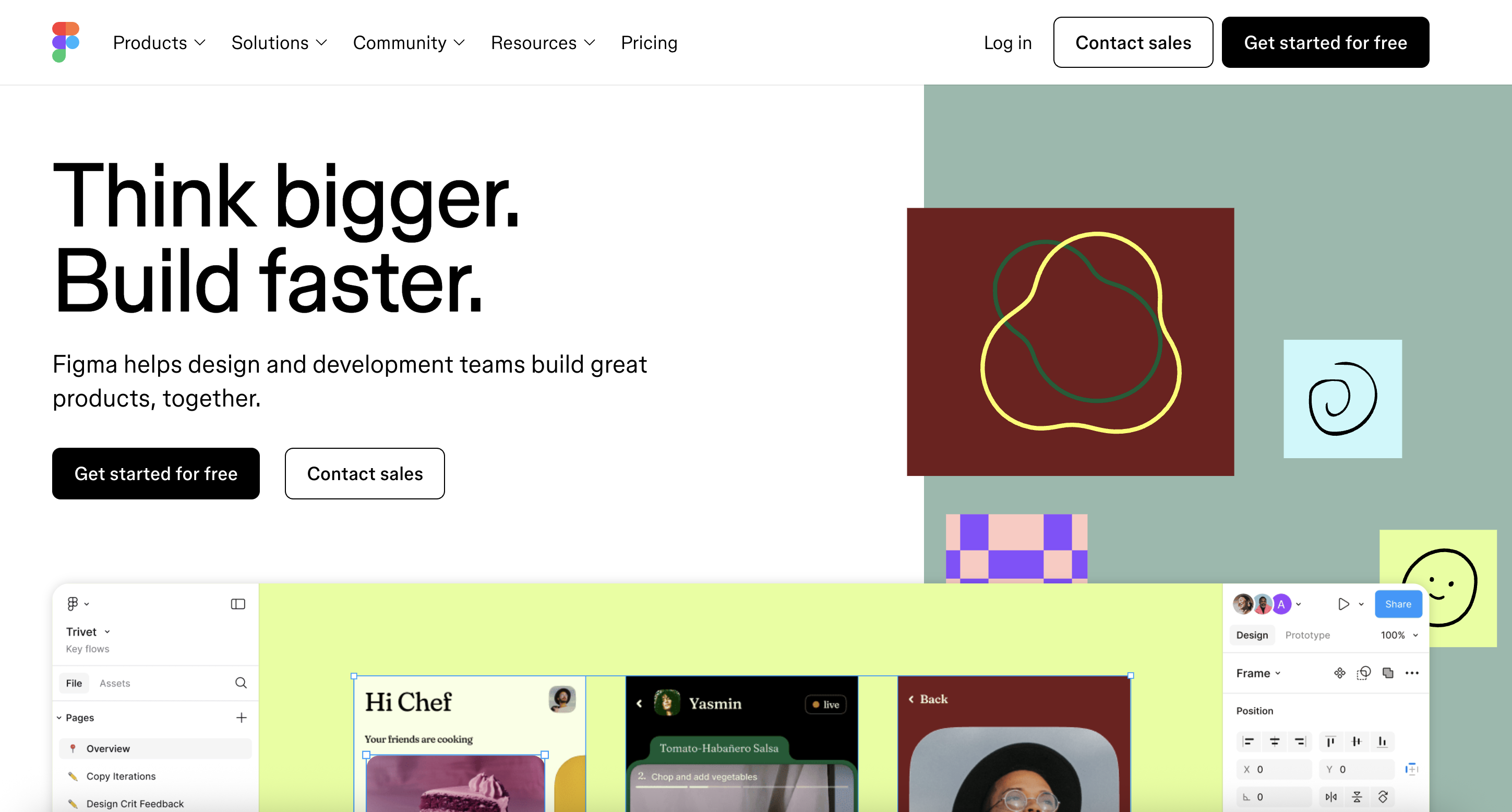It seems like every other company is bragging about their AI-enhanced user experiences. Consumers and the UX professionals responsible for designing great user experiences are right to be skeptical.
We weeded through the noise and picked six companies using AI technology to create a better customer experience. Here’s our take on what works and why.
Pinterest started its AI journey a few years ago by adding search result filters that allowed for customizable skin tone and hair type preferences. Recently the company expanded its AI-powered innovation to include body type technology.
This functionality uses shape, form, and size data to identify different body types. It then lets users pick the body type they would like to see in their search results. AI then helps the Pinterest algorithms deliver search results aligned with what the user wants to see.
The technology is currently available for searches on women’s fashion and wedding apparel, with men’s fashion rolling out in late 2024.

The goal is to ensure that all Pinterest users feel comfortable, included, and represented on the platform. Bill Ready, Pinterest CEO, noted in an interview, “We’ve really invested in making Pinterest a more positive alternative to traditional social media. We’re trying to prove you can use AI for good.”
Creating an environment where users feel welcomed and accepted as they are is the foundation for success for any business. Site visitors who have a positive experience tend to stick around.
Even if you don’t have a Pinterest-level budget to invest in AI-powered technology, there are smaller steps you can take to create an inclusive environment. This helps build a foundation of trust, which is a great way to keep customer retention rates high.
One way is with chatbots. You can train them to ask the right questions and provide personalized solutions. The goal is to help guide users quickly to the products and services that meet their preferences, wants, and needs. When that happens, users feel like you understand them and care enough to make their experience valuable.
Estee Lauder
In early 2023, Estee Lauder launched its AI-powered app targeted to blind and visually impaired make-up wearers. Billed as the Estee Lauder Voice-enabled Makeup Assistant (EL VMA), the app guides users through the make-up application process and provides feedback along the way.
The app uses machine learning, artificial intelligence, and the user’s phone camera to assess how evenly foundation, eyeshadow, and lipstick is applied. It then alerts the user to anything that might require additional attention. The goal is to provide a more accessible beauty experience for the visually impaired.
The app is a success because it gives blind or visually-impaired make-up users independence. They can apply their makeup with confidence without relying on feedback from friends or family members. With the app, users can accomplish this basic activity of daily life on their own.
Although this is a niche app that appeals to a small subset of the population, it highlights an important issue applicable to every business–accessibility. Your website, product, or service should serve everyone equally. The goal is to be inclusive, not exclusive.
According to the Centers for Disease Control, more than one in four adults in the U.S. has some type of disability. This includes 6.2% with a hearing disability and 5.5% with visual limitations.
To stay competitive and offer all users a great experience, you must design your experience for the needs of everyone, including those with disabilities. AI-powered assistive technologies, like screen readers and voice recognition systems, help you do that. Incorporating them successfully should be a priority for every UX team.
Mastercard
Mastercard unveiled Mastercard Small Business AI in early 2024. The program is powered by artificial intelligence and designed to provide real-time, customized assistance to small business owners. The goal is to provide an on-demand virtual mentor to help busy entrepreneurs find solutions to common issues they face when launching or managing their businesses.
Mastercard’s program is designed to offer “mentorship at scale, offering always-on advice from an inclusive set of sources,” according to Raja Rajamannar, Mastercard’s Chief Marketing and Communications Officer. The company is working with a collection of media partners and using generative AI to limit biases in the tool and address the needs of its diverse user base.
The content is presented to users through a personalized chatbot that answers questions and offers content suggestions covering everything from marketing and cybersecurity to finding funding sources and picking the best places to locate a bricks and mortar shop.
While Mastercard’s program is not replicable by most smaller businesses, its core concepts are. Providing valuable information to users, giving them personalized answers and suggestions, and helping them through their individual user journey are all things UX teams at any size business can–and should–do.
Some ways to do this is by incorporating AI-powered chatbots and designing websites, forms, and apps that recognize and reduce bias.
United Airlines
United Airlines is the first U.S. carrier to incorporate generative AI into its customer service efforts in a real-time, customer-facing way.
Specialized customer service teams, located in the company’s network operations center, use AI technology to analyze flight data and write detailed text or email messages to customers explaining flight delays and changes. The customer service team oversees the process, but AI does the heavy lifting. The end result is that impacted customers get a 360 degree view into the “why” behind their schedule interruption.

When the changes or delays are due to live weather events, customers also receive links to local radar maps along the flight path–again provided by generative AI. The goal is to mitigate customer frustration by educating them about how the weather in another part of the country is impacting their own flight.
Paired with United’s existing automatic rebooking assistance program, this new initiative helps keep passengers fully informed and empowered to manage their flight plans. This may not eliminate passenger frustration, but it makes giant strides towards reducing it.
Even if you have a micro-budget compared to United, it’s still possible to implement AI-powered tools to optimize the user experience. Start by giving customers as much information as possible throughout their user journey. Then use AI tools to capture and analyze important customer demographics and behaviors to offer a more personalized, real-time user experience.
Let’s say you’re running an ecommerce website. A customer who places an order can be kept in the loop with text messages and emails from purchase through delivery using AI-powered tracking tools. You can also gather and analyze a customer’s behavior on your site, then offer personalized recommendations based on predictive analytics.
Walmart
Virtual try-on apps have been around for a while. But Walmart elevated the experience with its Be Your Own Model technology. With it, users can upload a full-body photo of themselves, then “try on” more than 270,000 clothing items from across Walmart’s apparel catalog. With the new technology, the user can see precisely how every item will look on their body.
Walmart uses algorithms and advanced machine learning models to create a highly realistic simulation that includes fabric draping, shadows, and clothing placement based on the user’s actual body shape and measurements.

Walmart makes it easy for online shoppers to use the app by displaying a “Try It On” button on the item page for pieces that have the technology enabled. Customers upload their photo on the Walmart app once, and can then use the feature on the app and when they’re browsing the Walmart site on their computer.
Walmart’s goal is to give users a similar experience as they’d get in a Walmart store–personalized, engaging, realistic. The concept is one that any business can adopt, even with much smaller budgets.
You can increase user satisfaction and simulate a “being there” kind of feel with AI tools that provide personalized recommendations based on user preferences, browsing patterns, and past purchase history. Chatbots can also be implemented to guide users through their online journey.
H&M
See a shirt, dress, shoe or accessory that inspires you and wonder if you can find something similar at H&M? Your search is as easy as snapping or uploading a pic on your phone and using Visual Search in the H&M app.
The app uses AI technology to comb through H&M databases to find similar colors, patterns, and items. It then delivers matches or similar results to the user’s screen.
When we tried the app with a random snap from Instagram, the results were surprisingly accurate. Even though the image we took wasn’t focused on clothing or accessories, H&M’s visual search gave us multiple shirt and necklace options that were quite similar to what the person in our pic was wearing.
This use of AI technology helps streamline the online shopping experience and saves a user time. It also is an opportunity to help users discover products they may not otherwise have found searching on their own. Both strategies increase customer satisfaction with the overall brand experience. In turn this can boost your bottom line.
Even if you don’t have the technology team or budget to support this kind of functionality, there are similar strategies you can implement. AI tools like Algolia can be added to synthesize user data in real-time and deliver customized search results and product recommendations.






